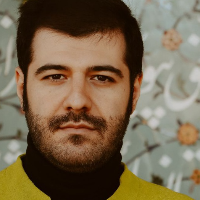Typology of the Visual Composition of Flowers and Birds in Safavid Palace Murals and Qajar Extensions
Flowers and birds have an ancient history and in Iranian beliefs reach the tree of life or the tree of all seeds on which Simorghi is the guardian. During the Timurid period, attention was paid to tashir, including the companionship of Khatai flocks with birds that had a natural aspect. In this field, before the Safavid period, there are no significant murals. The aim is to visually study the symbolic themes of flower and bird paintings on a case-by-case basis in the murals of the Safavid palaces of Qazvin and Isfahan (chehelsotoun), Hasht Behesht and Rakibkhaneh tower in Isfahan and the Qajar extensions in them. The paintings on the walls of these palaces are decorated with paintings from the battle of the kings to the feasts and battles of lovers and flowers and birds.The findings show that the flower and birds paintings of the mentioned palaces have been visually and thoughtfully engraved on the walls and their visual composition has been studied in five categories: Golshan or Yaleh, flowers and vases, Golboteh, Khatai and birds, Afshan and Flowers and angels. The flower and the bird can be considered as an abstract form of the tree of life before Islam and the Touba tree after Islam, which, although it has undergone changes in form and appearance, still retains its original pattern. Painters interpreted mystical stories in Iranian literature for kings who considered themselves the heirs of the religion and the guardians of Islam, using their imagination to create a second paradise. One of the main reasons for the presence of Qajar rulers in Safavid palaces and subsequent Qajar additions in the architectural decorations of these palaces was that the early Qajar kings showed themselves as heirs to the Safavid right. In the study of flowers and birds in the murals of palaces, although in terms of execution technique, the composition and symmetry are different, but both emphasize a religious theme. The choice of the role of the cypress tree to the flowering plant is a sign of the importance of the solitary bird, and the depiction of the rose plant for the bird's nest shows the importance of the bird and the rose and their literary conceptual relationship. In the paintings of flowers and birds studied in the Safavid period, the location of the flowers is outside the axis of symmetry, the bird is identifiable and its location is on a tree or branch of a flower; But in the Qajar extensions, most of the flower plants are centered on the symmetry of the effect, the bird is not recognizable, the bird's location is above the rose or centipede. The flowers of Isfahan's Chehelston Palace match the flowers of Hasht Behesht Palace, and the flowers and birds of Rakib Khaneh match the flowers and birds of Hasht Behesht Palace.
Murals , Flowers , Bird , Chehelsotoun , Hasht Behesht , Rakibkhaneh
- حق عضویت دریافتی صرف حمایت از نشریات عضو و نگهداری، تکمیل و توسعه مگیران میشود.
- پرداخت حق اشتراک و دانلود مقالات اجازه بازنشر آن در سایر رسانههای چاپی و دیجیتال را به کاربر نمیدهد.



